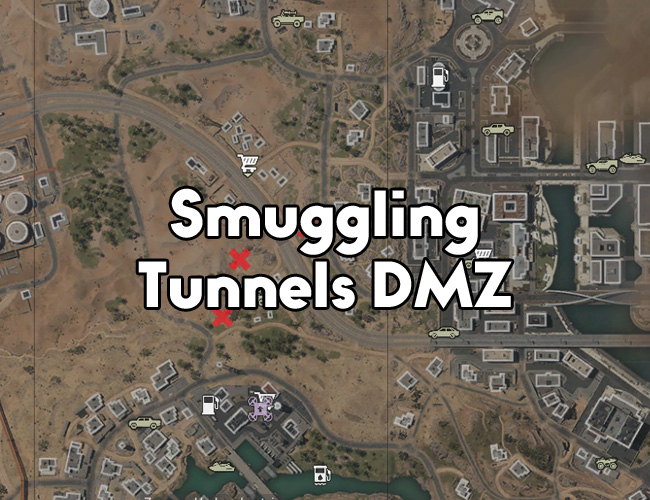Introduction
The Korean Demilitarized Zone (DMZ) is one of the most heavily guarded borders in the world, separating North and South Korea. But beneath its surface lies a network of secret tunnels used for smuggling goods, weapons, and people. These tunnels are not only a testament to human determination but also pose serious security threats. In this blog post, we will explore the history of these smuggling tunnels in DMZ, how they’re being used today, investigate their construction process – and what it means for the future. Get ready to uncover some secrets that have been hidden beneath the surface!
The History of the DMZ and Smuggling Tunnels
The Demilitarized Zone (DMZ) between North and South Korea is a heavily guarded area that has been in place since the end of the Korean War in 1953. It stretches for 160 miles along the border, with a width of four kilometers on either side.
During the war, this area was one of intense military conflict and suffered significant damage. After the armistice agreement was signed, both sides agreed to maintain a buffer zone between them which led to the creation of DMZ.
Over time, smugglers have taken advantage of this no-man’s land by using it as an underground passage for illegal activities such as drugs trafficking or weapon smuggling. The first tunnels were discovered in 1974, leading to an ongoing effort by both Koreas to find more tunnels ever since.
It is believed that North Korea constructed these tunnels during periods when their forces were less occupied with other military operations along their borders. Many believe they intended to use these tunnels for surprise invasions into South Korea.
Despite being found out numerous times by South Korean authorities over recent decades, North Korea continues building new tunnels beneath its territory – some running several kilometers long deep under mountains towards major cities down south.
These secret passages are not only used for illicit activities but also serve as a potential route for invasion from hostile forces across the DMZ according to experts.
How the Tunnels Are Used Today
The tunnels under the DMZ were initially used for smuggling goods, weapons, and people between North and South Korea. However, today they serve a different purpose.
One of the primary uses of these tunnels is for tourism. The Third Tunnel of Aggression is open to visitors who can explore its depths and learn about its history. Visitors are able to see firsthand how difficult it was to build such a tunnel under such perilous conditions.
Another use for these tunnels is military surveillance by South Korea. They regularly patrol the area around the DMZ in order to prevent any unauthorized entry into their territory. These tunnels provide them with an additional way to monitor activity along the border.
There have been reports that some North Korean defectors have used these tunnels as an escape route from their oppressive regime. Although these stories cannot be confirmed, it is clear that the existence of these tunnels provides a glimmer of hope for those seeking freedom.
While smuggling may have been their initial purpose, the smuggler’s tunnels now serve many different functions in modern times – from tourist attractions to military surveillance tools and even potential routes toward liberty for those brave enough to take them on!
Investigating the Tunnels
Investigating the tunnels is not an easy feat. It requires a great deal of preparation and planning, as well as specialized equipment and personnel. The task becomes even more challenging when it involves smuggling tunnels in the DMZ.
Before any investigation can take place, there needs to be a thorough understanding of the tunnel’s location and layout. This includes determining its depth underground, length, width, and whether or not it has ventilation shafts or other openings.
Once that information is gathered, teams can begin planning their entry into the tunnel. This typically involves using high-tech cameras and sensors to gather images and data from inside the tunnel without actually entering it.
If necessary, investigators may need to physically enter the tunnel to collect evidence or further investigate its purpose. This requires specialized training in confined space operations and potentially dangerous conditions such as low oxygen levels or unstable terrain.
Throughout all stages of investigation, safety must be paramount for everyone involved. The risk of cave-ins or booby traps is always present in smuggler tunnels within the DMZ.
Despite these challenges, investigating smuggling tunnels remains critical for ensuring national security interests are protected while also disrupting criminal activities at their source.
The Future of the Tunnels
The future of the smuggling tunnels in the DMZ is uncertain. With tensions between North and South Korea remaining high, it’s likely that these tunnels will continue to be used for illegal activities. However, efforts are being made to detect and destroy these tunnels.
There have been talks about turning some of the existing tunnels into tourist attractions, but this idea has faced criticism due to concerns about safety and security. It’s also unclear whether such a move would be appropriate given the history of conflict in the area.
One thing that is certain is that technology will play an important role in detecting and preventing tunnel smuggling in years to come. Advancements in sensors and other detection equipment have already helped uncover several previously unknown tunnels, and it’s likely that more sophisticated methods will be developed over time.
Despite ongoing efforts to prevent tunnel smuggling, it’s clear that this issue won’t disappear anytime soon. As long as there are people willing to engage in illegal activities, there will always be a demand for secret underground passages like those found beneath the surface of the DMZ.
Conclusion
As we explored the secrets beneath the surface of smuggling tunnels in DMZ, it’s clear that this heavily fortified area continues to pose a security threat. Despite efforts by South Korea to detect and destroy these tunnels, smugglers continue to find ways to bypass border controls. It’s important for authorities on both sides of the DMZ to remain vigilant and work together towards preventing illegal activities like smuggling.
While visiting or living near the DMZ may seem daunting due to its history and ongoing tensions, there is still much beauty and natural wonder to be found here. As a symbol of hope for reunification between North and South Korea, perhaps one day visitors will be able explore these historic sites without fear of danger or conflict. Until then, let us continue exploring quietly beneath the surface as we unravel more Secrets Beneath The Surface: Exploring Smuggling Tunnels DMZ.



